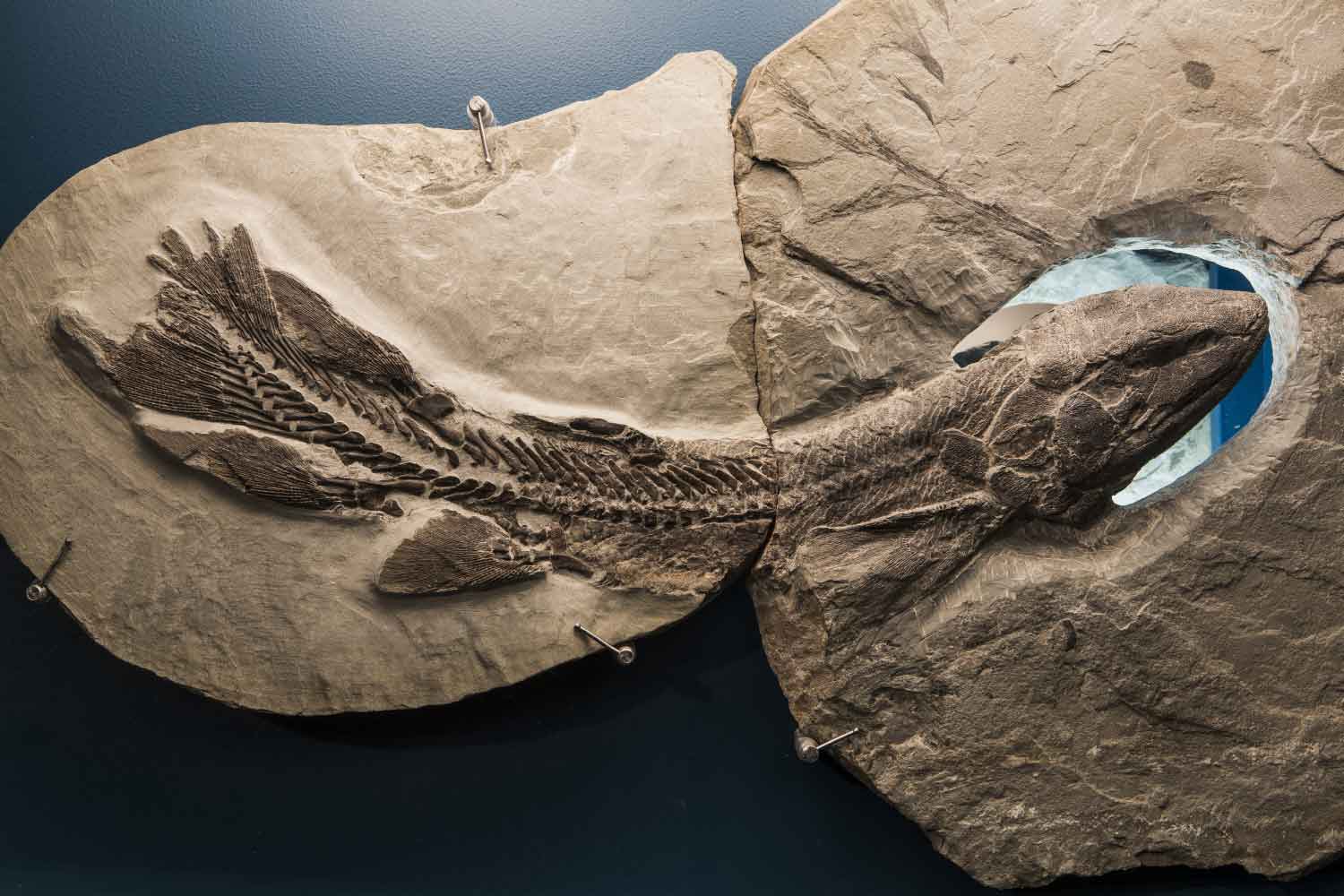
Late Devonian strata at Miguasha National Park. These rocks contain beautifully preserved fossil fish and other animals and plants. (Photo: Mathieu Dupuis, Miguasha National Park).
Geological Period
Upper Devonian
Main geological interest
Paleontology
History of geosciences
Location
Quebec, Canada
48°06’18”N, 066°21’11”W
Late Devonian strata at Miguasha National Park. These rocks contain beautifully preserved fossil fish and other animals and plants. (Photo: Mathieu Dupuis, Miguasha National Park).
The World's most outstanding site for Late Devonian fossil fish, including the lobe-finned fishes that are the evolutionary link to vertebrate life on land.
The site holds worldwide significance owing to its remarkable yield of exceptionally well-preserved fossils over the past 180 years, including an impressive number of vertebrate fossils (more than 18,000 specimens housed in various museums around the world). These fossils represent most of the major evolutionary groups of vertebrates that inhabited the Devonian period, known as the “Age of Fishes.” Not only are these fossils crucial for understanding vertebrate evolution, but they also shed light on the paleoecology and paleoenvironment during the transition from water to land. It is for these reasons that the site was granted UNESCO World Heritage status in 1999.
- Geological description
Miguasha National Park, spanning 87.3 hectares, is situated on Chaleurs Bay in eastern Québec. It preserves the fossiliferous cliff of the Late Devonian (Frasnian) Escuminac Formation, where organisms were buried 375 million years ago in an equatorial paleoestuary on the southeast coast of the paleocontinent Laurussia, connected to the Rheic ocean (Cloutier et al., 2011). The site boasts an abundance and diversity of beautifully preserved fossil fish, including specimens of Elpistostege watsoni, a transitional species between fishes and four-limbed vertebrates (Cloutier et al., 2020). This species exhibited fingers embedded in its pectoral fins, as well as gills, lungs, and internal nostrils, enabling it to breathe air. Alongside the fish, terrestrial arthropods and plants, such as scorpions, millipedes, and remains of tree-like ferns, were washed into the estuarine sediments (Cloutier, 2013). Many specimens are complete and fully articulated, some preserved in three dimensions (Cloutier, 2013), others exceptionally-preserved larvae and juveniles (Chevrinais et al.,surprise that Miguasha has been visited by many paleontologists from around the world.
- Scientific research and tradition
In 1842, Gesner found Miguasha’s first fossil fish. In the 1880’s, Whiteaves formerly described some fossil fish. Since, hundreds of publications focused on the Escuminac biota (Schultze and Cloutier, 1996; Cloutier, 2013). Miguasha hosted the 7th and 17th International Symposia on Early and Lower Vertebrates in 1991 and 2024, respectively.
- Reference
Chevrinais, M., Sire, J.-Y. and Cloutier, R. (2017) ‘Unravelling the ontogeny of a Devonian early gnathostome, the “acanthodian” Triazeugacanthus affinis (eastern Canada)’, PeerJ, 5, p. e3969. Available at: https://doi.org/10.7717/peerj.3969.
Cloutier, R. (2013) ‘Great Canadian Lagerstätten 4. The Devonian Miguasha Biota (Québec): UNESCO World Heritage Site and a Time Capsule in the Early History of Vertebrates’, Geoscience Canada, pp. 149–163. Available at: https://doi.org/10.12789/geocanj.2013.40.008.
Cloutier, R. et al. (2020) ‘Elpistostege and the origin of the vertebrate hand’, Nature, 579(7800), pp. 549–554. Available at: https://doi.org/10.1038/s41586-020-2100-8.
Cloutier, R., Proust, J.-N. and Tessier, B. (2011) ‘The Miguasha Fossil-Fish-Lagerstätte: A consequence of the Devonian land-sea interactions’, Palaeobiodiversity and Palaeoenvironments, 91, pp. 293–323. Available at: https://doi.org/10.1007/s12549-011-0058-0.
Klug, C. et al. (2021) ‘A late-surviving stem-ctenophore from the Late Devonian of Miguasha (Canada)’, Scientific Reports, 11(1), pp. 1–9. Available at: https://doi.org/10.1038/s41598-021-98362-5.
Schultze, H.-P. and Cloutier, R. (eds) (1996) Devonian Fishes and Plants of Miguasha, Quebec, Canada. München: Verlag Dr. Friedrich Pfeil.
- Author(s)
Godfrey Nowlan.
Geological Survey of Canada (retired), Calgary, Alberta, Canada.
Richard Cloutier.
Université du Québec à Rimouski. Canada.


